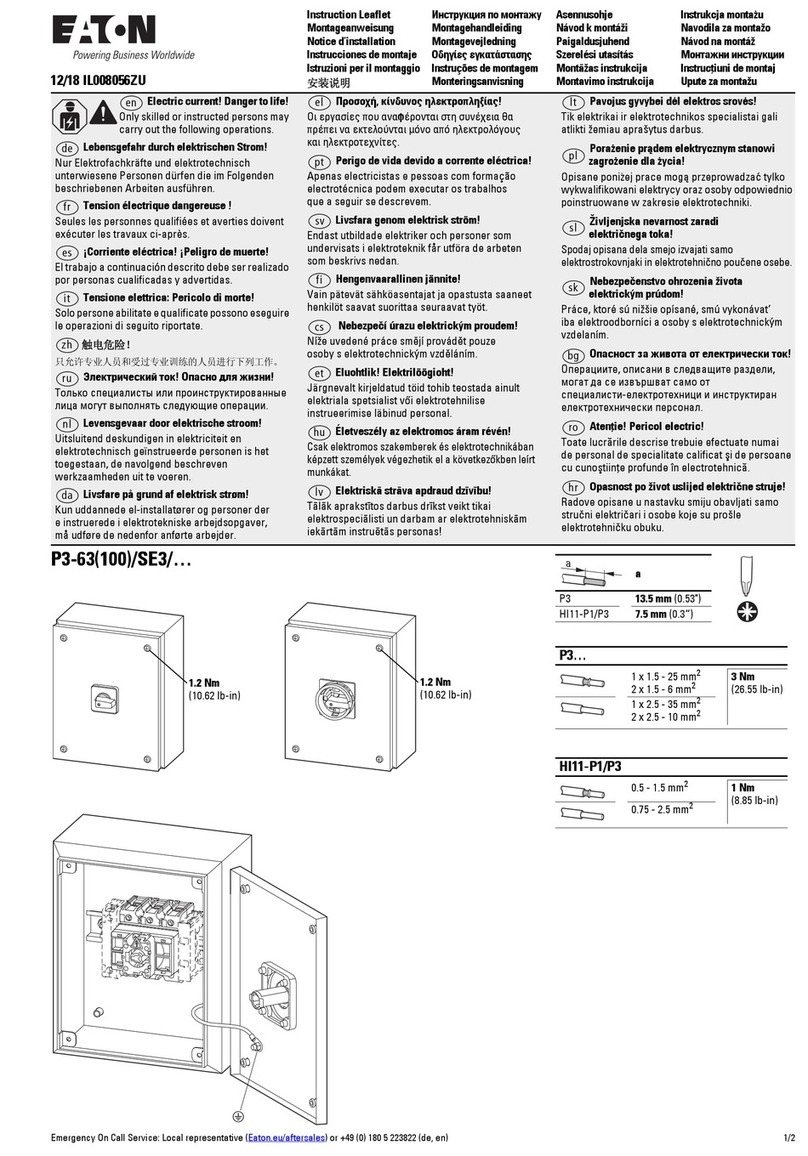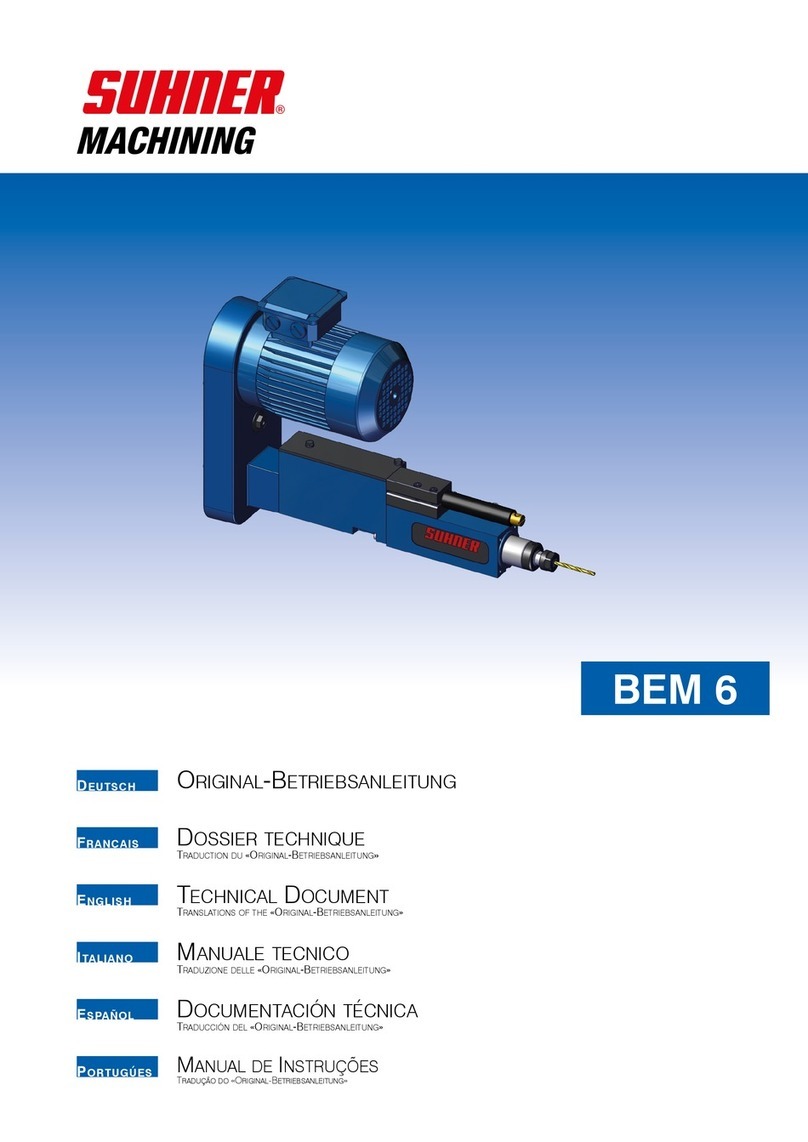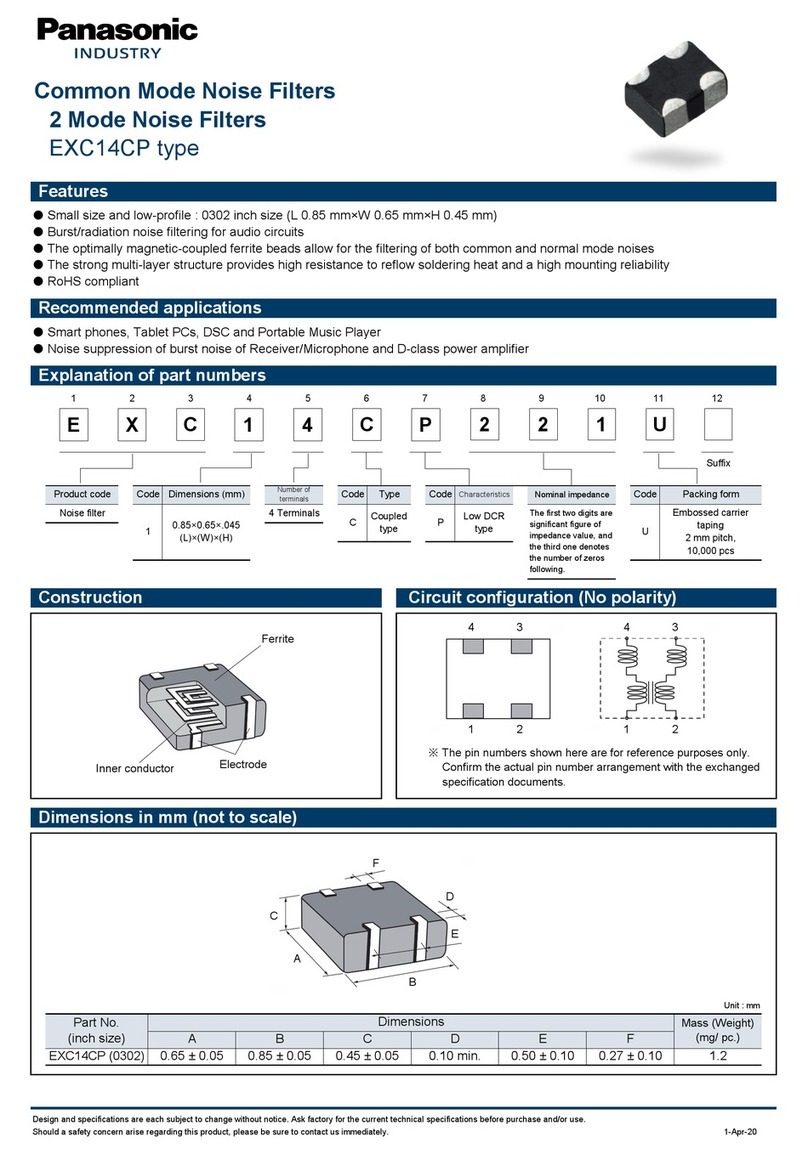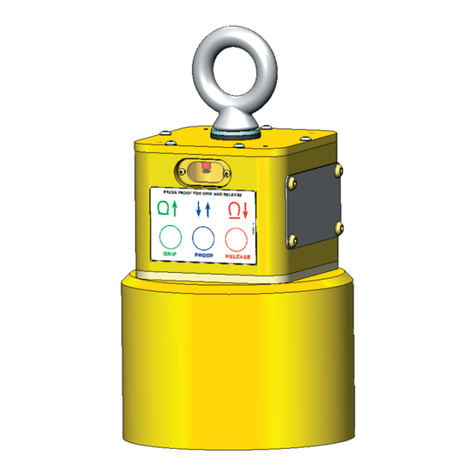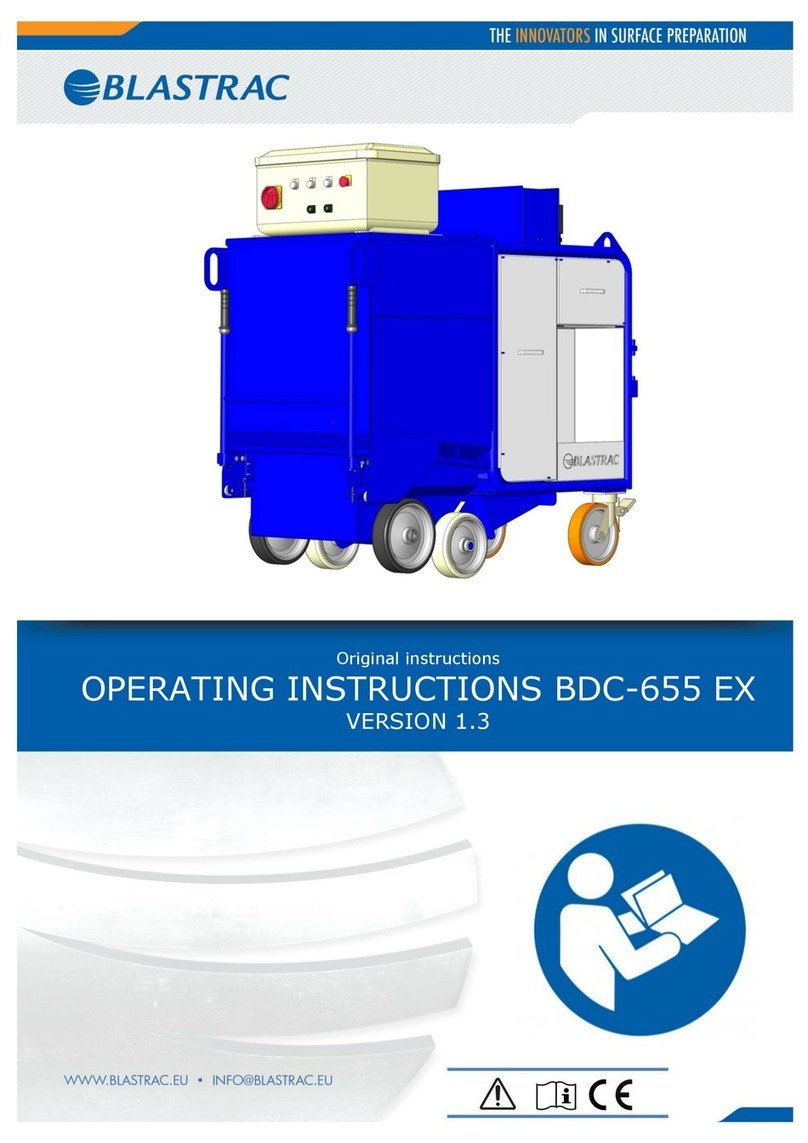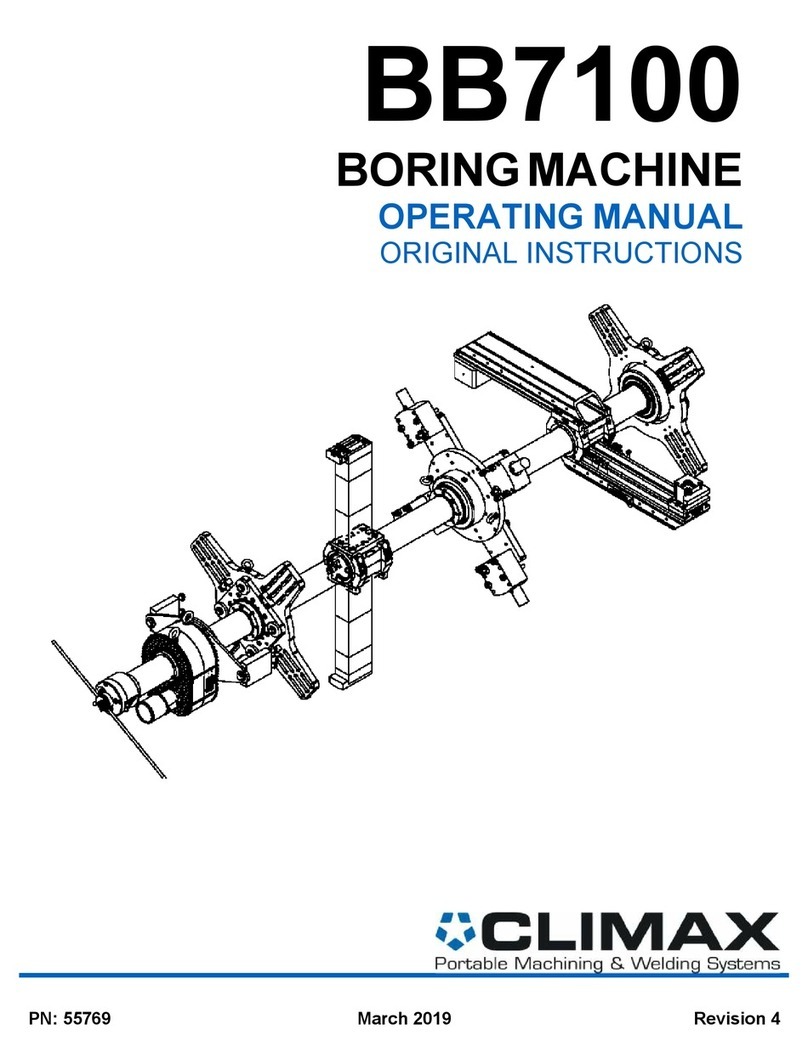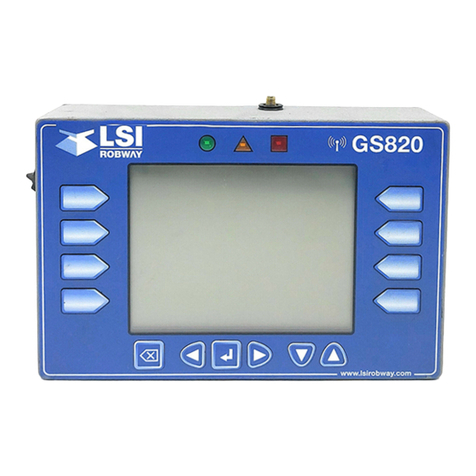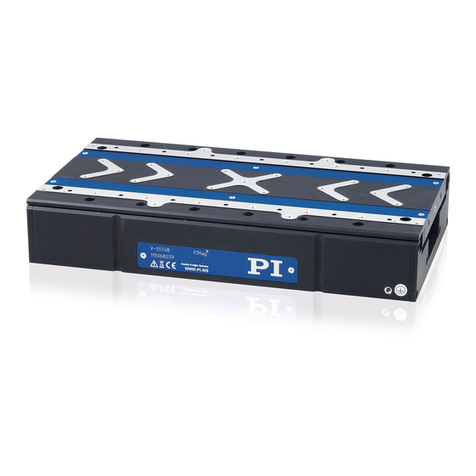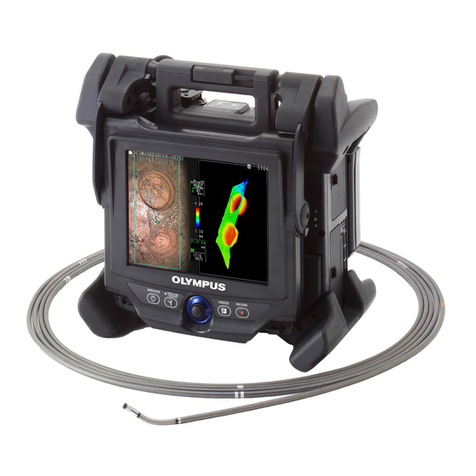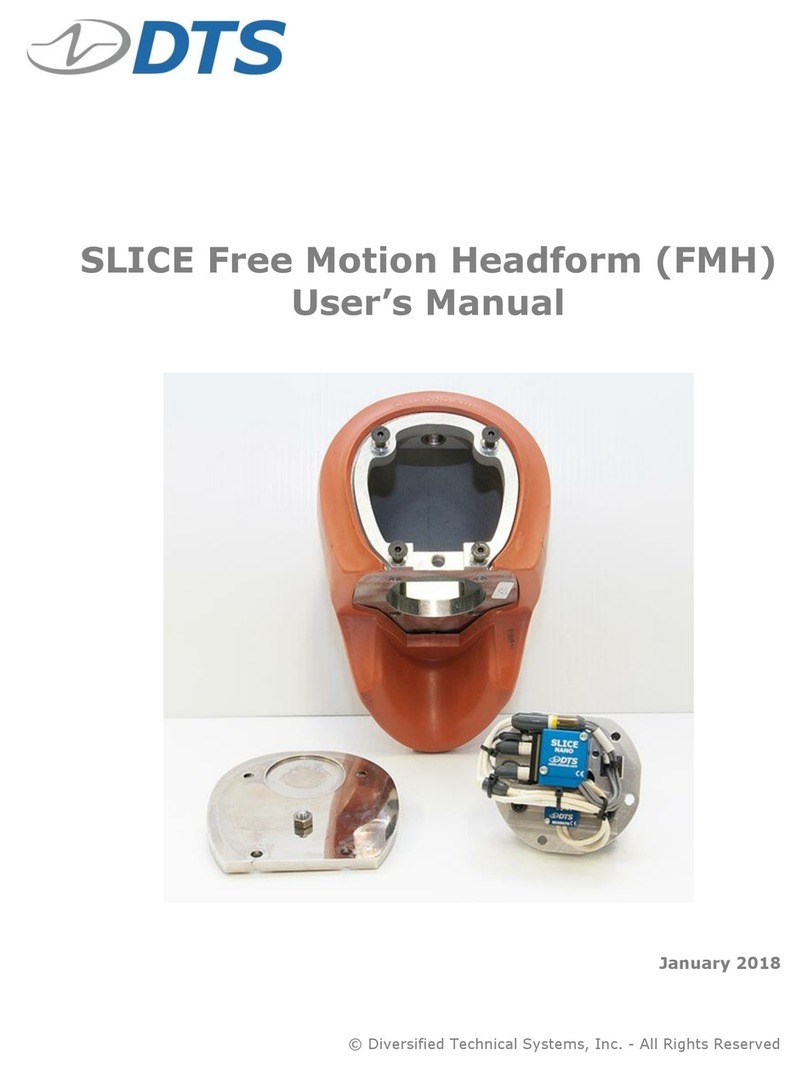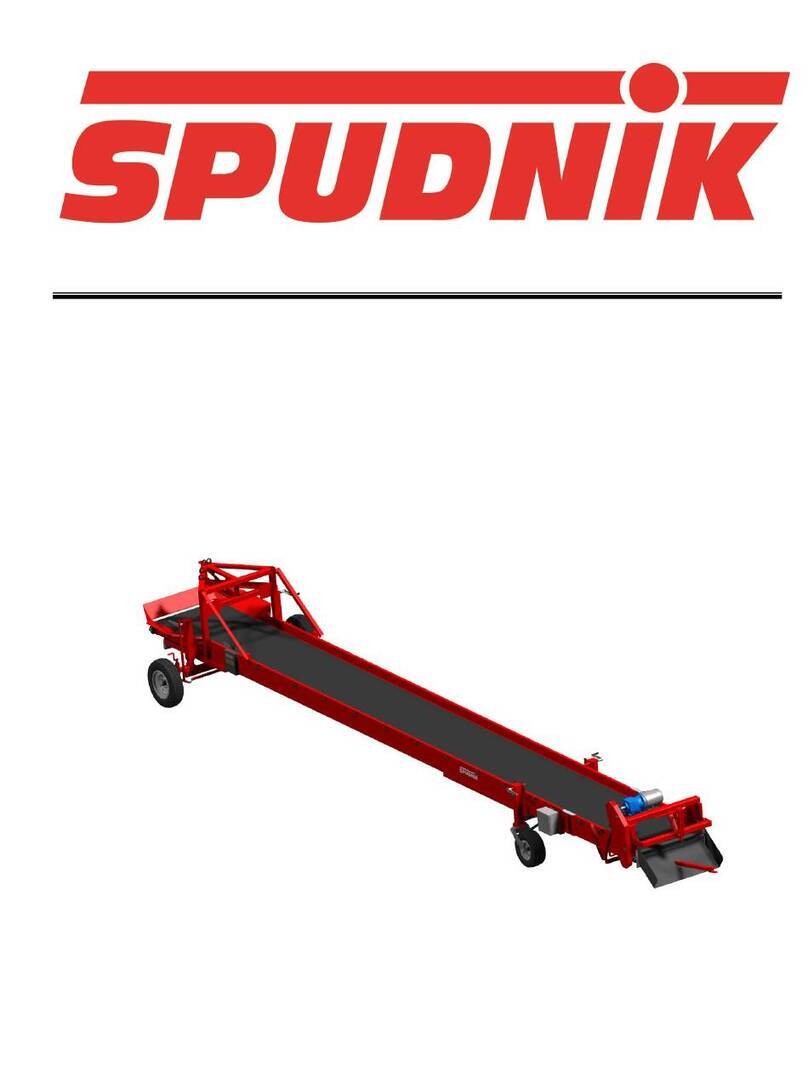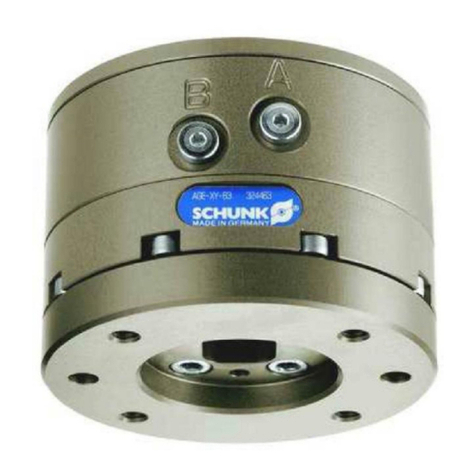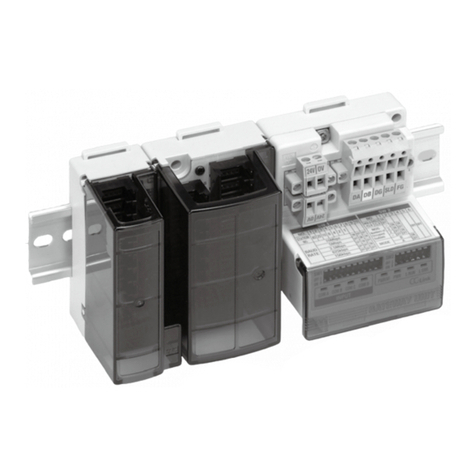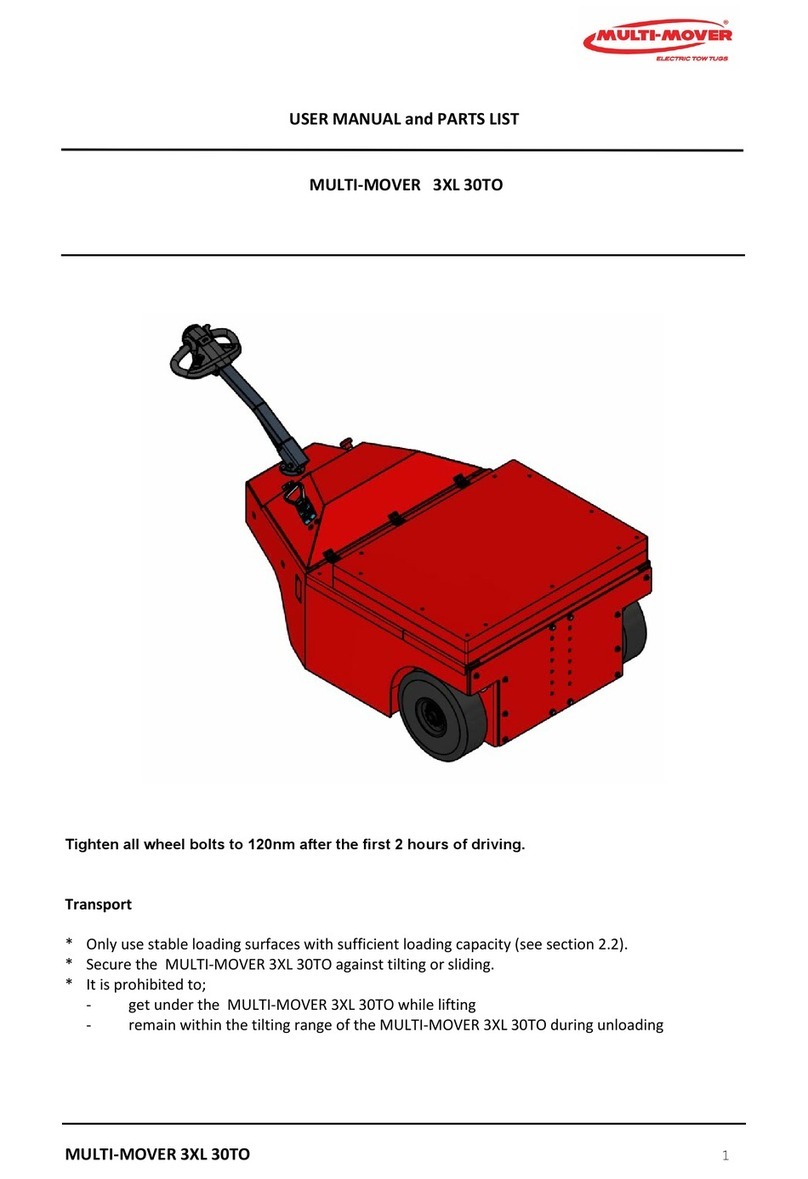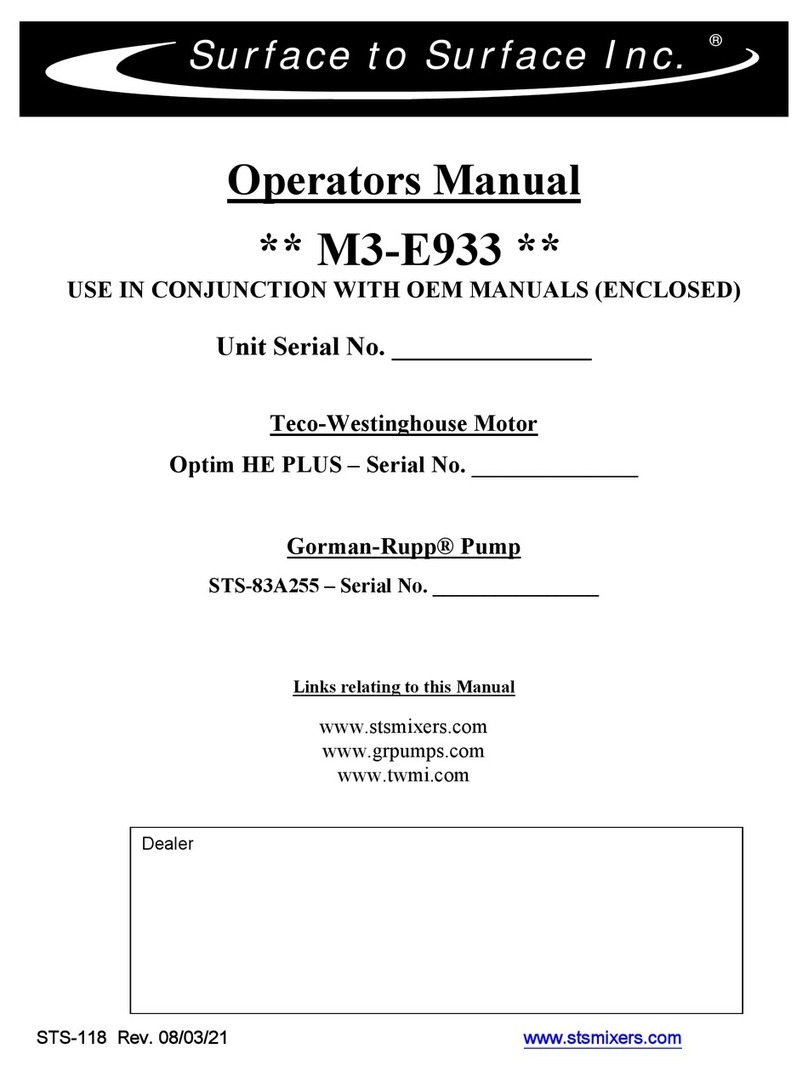Biocontrol topcat User manual

Gebrauchsanleitung
Mode d’emploi
Istruzioni per l’uso
Instructions for use
topcat
Die Wühlmausfalle.
Le piège à campagnols.
La trappola per topi.
The vole trap.
SWISS
MADE
S
E
I
T
2
0
0
0
D
A
S
O
R
I
G
I
N
A
L

Inhalt DE
Sicherheits- und Gesetzeshinweise 2
Die topcat-Falle 4
Stellen der topsnap-Falle 4
Zubehör zur topcat- Falle 5
Das Spannen der topcat-Falle 6
Wippe in Sperrposition 6
Wartung 7
Schadnager-Merkmale 8
Tipps 9
Sommaire FR
Précautions de sécurité et lois 2
Le piège topcat 10
La pose du piège topcat 10
Les accessoires du piège topcat 11
Tendage du piège topcat 12
Position de sécurité 12
Entretien 13
Caractéristiques des rongeurs 14
Suggestions 15
Indice IT
Avvertenze legali e di sicurezza 2
La trappola topcat 16
Il corretto posizionamento della trappola topcat 16
Accessori relativi alla trappola topcat 17
La messa in tensione della trappola topcat 18
Bilanciere in posizione di blocco 18
Manutenzione 19
Caratteristiche del roditore nocivo 20
Suggerimenti 21
Content EN
Safety precautions and legal notice 2
The topcat-trap 22
Positioning the topcat-trap 22
Accessories 23
How to set the topcat-trap 24
Locking the trap 24
Instructions for care 25
Characteristics of rodents 26
Recommendations 27
Sicherheits- und Gesetzeshinweise
■Die Falle darf Kindern und Personen unvertraut mit
deren Anwendung nicht überlassen werden.
■Hände weg bei zuschnappender Falle
(Verletzungsgefahr).
■Die topcat- Falle nicht leer zuschnappen lassen.
■Bei der Anwendung der Fallen empfiehlt es sich,
Handschuhe zu tragen (Krankheitsübertragung).
■Beachten Sie beim Einsatz von topcat die lokalen
gesetzlichen Bestimmungen.
Précautions de sécurité et lois
■Ne confiez pas le piège à des enfants ou personnes
non-familières avec l’utilisation.
■Risque de blessure lorsque le piège se déclenche.
■Ne déclenchez pas le piège à vide!
■Pour des raisons prophylactiques, il est recommandé
de porter des gants lors de l’usage des pièges
(transmission de maladies).
■Pour utiliser les pièges topcat respecter la loi en
vigueur.
Avvertenze legali e di sicurezza
■Tenere la trappola fuori dalla portata dei bambini e
persone che non hanno dimestichezza con l’utilizzo
della trappola.
■Togliere le mani quando la trappola sta per scattare,
pericolo di lesioni.
■Non fare mai scattare a vuoto la trappola topcat.
■Prima di prendere in mano i topi catturati si
raccomanda vivamente di indossare guanti (rischio di
trasmissione malattie).
■Utilizzare topcat nel rispetto delle leggi vigenti locali.
Safety precautions and legal notice
■Keep away from children and anyone unfamiliar with
its use.
■Keep hands away from snapping trap injury can
result from mishandling.
■Do not allow trap to snap closed if empty.
■Use gloves while handling the vole trap (disease
transmission).
■Use topcat in accordance with local laws and
regulations.
2 3

DE DE
Die topcat-Falle Zubehör zur topcat- Falle
Stellen der topsnap-Falle
Suchstab Lochschneider
Tragbügel Markierstab
1. Um einen Mäusegang zu finden, stecken Sie den
Suchstab in der Nähe frischer Mäusehaufen in
Abständen von rund 5 cm jeweils 10 –15 cm tief in
den Boden, bis Sie deutlich einen Hohlraum
wahrnehmen. Vergrössern Sie das Loch mit dem
Suchstab, damit Sie mit einem Finger die genaue
Gangrichtung feststellen können. Vermeiden Sie,
wenn möglich, die Gänge mit Ihren Schritten zu
zerdrücken.
2. Schneiden Sie ein scharfkantiges Loch, indem Sie
den Lochschneider bis rund 3 – 4 cm unter den
Gangboden hinunter drehen. Tun Sie dies mit
sanftem Druck, damit der Gang nicht zerstört wird.
Ziehen Sie den Lochschneider mit dem Erdpfropfen
vorsichtig aus dem Loch heraus. Sammeln Sie
anschliessend mit der Spitze des Suchstabes, die auf
den Gangboden hinuntergefallene Erde zur Mitte
des Loches zusammen und drücken Sie dann mit
dem Knauf (Kunststoffkugel) des Suchstabes den
Gang sauber und glatt.
Spannhebel
Wippe
Deckel
Auslösestange
Auslöser
3. Stellen Sie die geschlossene Falle so ins Loch, dass
ihr Durchgang optimal mit Gangrichtung und Höhe
übereinstimmt. Drücken Sie an der Oberfläche mit
der Hand die Erde so an die Falle, dass sie dicht
umschlossen ist, damit weder Licht noch Luft in den
Mäusegang dringen kann. Achten Sie darauf, dass
für den Spannhebel genügend Bewegungsraum
bleibt. Spannen Sie dann die Falle, und markieren
Sie den Standort deutlich.
4. Ist der Fallenmechanismus ausgelöst, bewegen Sie
die Falle sanft seitlich hin und her, um das Loch zu
vergrössern. Dann ziehen Sie die Falle vorsichtig
heraus, entsorgen das tote Tier und platzieren die
leere Falle wieder im gleichen Loch. Diesen Vorgang
wiederholen Sie solange, bis keine Maus mehr
gefangen und die Falle nicht mehr verwühlt wird.
Dann entfernen Sie die Falle und stecken einen
Markierstab in das offene Loch. Ist das Loch nach
rund zwei Stunden nicht verwühlt, halten sich keine
Schermäuse mehr im Gang auf.
4 5

DE DE
Das Spannen der topcat-Falle
1. Spannhebel mit Wippe durch den Deckelschlitz bis
zum Anschlag hochdrücken.
2. Wippe flach auf den Fallendeckel hinunterdrücken
und dort festhalten. Die Auslösestange bis zum
Anschlag hinaufziehen.
3. Wippe langsam lösen, bis die Spitze der Wippe an
der Spitze der Auslösestange anschlägt.
Wippe in Sperrposition
Mit einer Drehung der Wippe um 90° nach aussen
kann die Falle in geöffnetem Zustand gesperrt werden.
90°
Wartung
Die Falle gelegentlich mit Wasser spülen und an der
Luft trocknen lassen. Nach Bedarf mit geruchlosem
Melkfett einfetten.
Ersatzteile
Alle Teile der topcat- Falle können einzeln ersetzt
werden. Wenden Sie sich an den nächsten
Wiederverkäufer.
Verschobene Auslöser in die richtige Position bringen
Die Wippe ist in Sperrposition (siehe Seite 6 ). Die
beiden Auslöser werden nacheinander in der richtigen
Position festgehalten. Gleichzeitig wird die Auslöse-
stange am Häkchen gefasst und ausschliesslich im
Uhrzeigersinn in die richtige Position gedreht, bis
Häkchen und Auslöser parallel zur Wippe ausgerichtet
sind.
Funktionskontrolle: Falle spannen und kontrollieren, ob
beide Auslöser (Abb. links) parallel zur Wippe (Abb.
rechts) ausgerichtet sind.
6 7

DE DE
Tipps
Pro Mäusebau genügen eine bis zwei Fallen.
Kontrollieren Sie regelmässig, ob der Fallenmechanis-
mus ausgelöst ist.
Wird eine Falle verwühlt, stellen Sie die Falle nochmals
an die gleiche Stelle. Reinigen Sie jedoch zuerst den
Gang und achten Sie darauf, dass weder Licht noch
Luft in den Gang dringt.
Der Maulwurf (wenn Fang erlaubt) ist schwierig zu
fangen, denn er lebt allein in seinem weitläufigen
Gangsystem (100 – 250 Meter). Er ist deshalb nur mit
viel Geduld zu fangen.
Mäuse und Maulwürfe sind sehr geruchsem pfindlich.
Der Geruch des Menschen schreckt sie aber nicht ab.
Fallen, an denen starke Gerüche wie Lösungsmittel,
Mist oder Parfum haften, werden schnell verwühlt.
Waschen Sie Fallen die häufig verwühlt werden
gründlich mit heissem Wasser. Lagern Sie die Fallen in
einem luftdurchlässigen Behälter an einem geruchs-
neutralen Ort.
Feldmäuse werden mit beköderten Fallen wesentlich
schneller gefangen: stecken Sie ein Stück Karotte oder
Apfel an den oberen Auslöser.
Zur Optimierung des Fangerfolges protokollieren Sie
die Fänge jeder Fangstelle und beachten Sie
Folgendes:
■Schermäuse leben im Familienverband: ein Männ-
chen, ein bis zwei Weibchen und vier bis fünf
Jungtiere.
■Feldmäuse leben in grösseren Verbänden: Mehr als
zehn gefangene Feldmäuse an einer Fangstelle sind
nicht unüblich.
■Maulwürfe leben, ausser in der Paarungszeit, alleine.
Zusätzliche Informationen unter
www.topcat.ch
Sicherheits- und Gesetzeshinweise: Seite 2
Schadnager-Merkmale
Wühl-/Schermaus
Arvicola terrestris
Ernährt sich hauptsächlich unterirdisch von Wurzeln und
Knollen
Walzenförmiger Körper, lange und gebogene,
biberähnliche Schneidezähne
Länge: 12 – 20 cm; Gewicht: 60 – 110 g
Erdhaufen sind eher flach,
die Erde ist fein und mit
Pflanzen- und Wurzelresten
versetzt
Gross
Feldmaus
Microtus arvalis
Vielseitiger Pflanzenfresser, besonders Gräser und Körner
Walzenförmiger Körper, aber schlanker als die grössere
Wühlmaus
Länge: 9 – 12 cm; Gewicht: 20 – 45 g
Sehr kleine Erdmengen um
die offenen Baueingänge
herum. Die Erde ist sehr fein
Sehr gross
Maulwurf
Talpa sp.
Regenwürmer, Larven und Insekten
Sehr muskulöser Körper mit mächtigen Grabschaufeln und
langen, starken Nägeln. Schlanke, rüsselartige Schnauze
Länge: 10 – 15 cm; Gewicht: 50 – 130 g
Halbkugelförmig mit
grobscholliger Erde
Tief
Nahrung Erdhaufen
Körpermerkmale Vermehrungspotential
8 9

FR FR
Le piège topcat Les accessoires du piège topcat
Sonde Tarière
Porte-piège Piquet
Tendeur
Clapet
Couvercle
Tige des déclencheurs
Déclencheurs
La pose du piège topcat
1. Pour trouver une galerie de campagnol, enfoncez
votre sonde de 10 à 15 cm, tous les 5 cm, dans les
environs immédiats d’une taupinière fraîche. Dès
que vous êtes tombés sur un vide, agrandissez le
trou à l’aide de la sonde afin de pouvoir introduire
un doigt dans la galerie et repérer ainsi sa position
exacte. Evitez d’écraser les galeries de vos pas.
2. A l’aide de la tarière, faites prudemment un trou à la
verticale de la galerie, pénétrant de 3 – 4 cm à
travers la base de la galerie. Découpez ce trou en
tournant l’outil avec une légère pression afin de ne
pas détériorer la galerie. Retirez la tarière délicate-
ment du sol. Dégagez bien les orifices de la galerie
et rassemblez la terre molle tombée dans le terrier
vers le milieu du trou de piégeage. Ecrasez-la avec
le pommeau de la sonde et lissez bien la galerie.
3. Placez le piège encore détendu dans l’orifice de
piégeage de telle manière que le passage du piège
corresponde le mieux possible à la direction de la
galerie. Refermez bien la terre autour du piège afin
que nulle lumière ne puisse pénétrer à l’intérieur.
Faites attention à ce que le tendeur n’appuie pas sur
la surface du sol. Tendez le piège et marquez
l’endroit clairement.
4. Si le piège est déclenché, élargissez d’abord l’orifice
de piégeage en inclinant le piège de tous les côtés.
Puis retirez prudemment le piège et videz-le dans un
seau. Replacez le piège dans le même orifice de
piégeage. Répétez l’opération jusqu’à ce que le
piège ne soit plus déclenché. Retirez alors le piège
et marquez le trou d’une baguette. Si après 2 heures
d’attente, le trou n’est pas refermé, il n’y a plus de
campagnols terrestres dans la galerie.
10 11

FR FR
Tendage du piège topcat
1. Soulevez le tendeur et le clapet et faites-les passer à
travers le couvercle du piège.
2. Rabattez le clapet vers la tige des déclencheurs et
fixez-le à plat sur le couvercle avec le pouce. De l’autre
main, levez la tige des déclencheurs jusqu’à l’arrêt.
3. Relâchez lentement le clapet et appuyez la pointe
du clapet sur la pointe du crochet.
Position de sécurité
En rabattant le clapet de 90 degrés vers l’extérieur,
vous bloquez le piège en position ouverte.
90°
Entretien
Lavez régulièrement le piège à l’eau et laissez-le
sécher. Graissez éventuellement à l’aide d’un peu de
graisse à traire.
Pièces de rechange
Toutes les pièces des pièges topcat peuvent être
remplacées séparément.
Réglage de la position des déclencheurs
Rabattez le clapet en position de sécurité ( voir page 12 ).
Tenez alternativement le déclencheur supérieur, puis
l’inférieur, au milieu de la cavité de piégeage et
tournez la tige des déclencheurs dans le sens horaire
jusqu’à ce que la pointe du crochet soit orientée
exactement dans la direction de la pointe du clapet.
Contrôle: Tendez le piège. Les deux déclencheurs
(photo à gauche) doivent se trouver exactement au
milieu de l’orifice de piégeage et parallèle du clapet
(photo à droite).
12 13

FR FR
Suggestions
Il suffit d’un à deux pièges par terrier de campagnols.
Contrôlez les pièges très fréquemment.
Lorsqu’un piège a été bourré, on peut le replacer au
même endroit après l’avoir vidé et avoir bien dégagé
la galerie. Faites attention à ce que la terre soit
refermée de manière hermétique autour du piège.
La taupe (si la capture est autorisée) est difficile à
capturer parce qu’elle vit solitaire dans ses galeries
étendues (100 – 250 mètres). Donc armez-vous de
patience!
La taupe et les campagnols disposent d’un odorat
extraordinaire mais ne craignent pas l’odeur de l’être
humain. Ils n’apprécient pourtant pas les odeurs
étranges telles que les détergents, le fumier, ou les
parfums. S’ils détectent une telle odeur, le piège sera
bien vite bourré. Nettoyez les pièges qui sont bourrés
régulièrement à l’aide d’eau bouillante. Stockez vos
pièges à un endroit sans odeurs.
La capture des campagnols des champs est bien plus
aisée en utilisant un petit bout de pomme ou de
carotte enfilé sur le déclencheur supérieur.
Vous pouvez optimiser votre travail de taupier en
notant scrupuleusement toute capture: lieu, jour, heure,
animal capturé. Sachez que:
■Les campagnols terrestres vivent en famille: mâle, une
ou deux femelles, et de quatre à cinq jeunes par
terrier.
■Les campagnols des champs vivent plutôt en groupes.
Il n’est pas rare de capturer plus d’une douzaine
d’individus au même endroit.
■Les taupes sont solitaires, sauf en période de rut.
Pour de plus amples informations
www.topcat.ch
Précaution de sécurité et lois: page 2
Caractéristiques des rongeurs
Campagnol terrestre
Arvicola terrestris
Principalement racines et tubercules souterraines
Corps cylindrique; Incisives longues et recourbées comme
un castor
Longueur: 12 – 20 cm; poids: 60 – 110 g
Les taupinières sont assez
plates et la terre est fine,
mélangée à des résidus de
plantes et de racines
Grand
Campagnol des champs
Microtus arvalis
Herbivore polyvalent: se nourrit en surface de la partie
verte des plantes et de graines
Corps cylindrique, mais plus mince que le campagnol
terrestre
Longueur: 9 – 12 cm; poids: 20 – 45 g
De très petites quantités de
sol autour de l’entrée du
terrier qui reste ouvert. La
terre est très fine
Très grand
Taupe
Talpa sp.
Carnivore: vers de terre, larves et insectes etc.
Corps très musclé avec pattes antérieures puissantes
adaptées au fouissement. Museau pointu. Longues griffes
Longueur: 10 – 15 cm; poids: 50 – 130 g
Hémisphérique, avec de la
terre grossière
Faible
Alimentation Taupinière
Caractéristiques du corps Taux de reproduction
14 15

IT IT
La trappola topcat Accessori relativi alla trappola topcat
Sonda Foraterra
Armatura di portare Barra di marcatura
Leva tenditrice
Bilanciere
Coperchio
Asta di sgancio
Meccanismo di sgancio
Il corretto posizionamento della
trappola topcat
1. Per localizzare una galleria scavata dai topi, infilare
la sonda fino a 10 – 15 cm di profondità nel suolo
nei pressi di mucchietti di terra smossa di recente
dai topi e sondare il terreno a intervalli di 5 cm circa
fino a che non si percepisce chiaramente la
presenza di una cavità sotterranea. Allargare la
buca con la sonda, in modo da poter individuare
con un dito la precisa direzione della galleria.
Evitare, se possibile, di schiacciare le gallerie con i
piedi.
2. Tagliare una buca dai bordi netti eseguendo con il
foraterra un movimento rotatorio dall’alto attraverso
la galleria e fino a circa 3 – 4 cm sotto il fondo della
galleria. Esercitare solo una lieve pressione per
evitare di distruggere la galleria. Estrarre dalla
buca con delicatezza il foraterra con il tappo di
terra. Spingere quindi con la punta della sonda la
terra caduta sul fondo della galleria al centro della
buca e costiparla con l’ausilio del pomello della
sonda.
3. Posizionare la trappola ancora chiusa nella buca e
orientarla in modo che il suo orifizio di passaggio
coincida perfettamente con la direzione e l’altezza
della galleria. Chiudere con terra lo spazio attorno
alla trappola in modo che nella galleria non possa
penetrare né luce né aria dall’esterno. Accertarsi che
vi sia sufficiente spazio di movimento per azionare
la leva tenditrice. Mettere in tensione la trappola e
contrassegnarne chiaramente l’ubicazione.
4. Dopo che il meccanismo della trappola è scattato,
muovere la trappola delicatamente avanti e indietro
per allargare la buca. Estrarre la trappola con
cautela, smaltire l’animale morto e riposizionare la
trappola vuota nella medesima buca. Ripetere
questa operazione fino a che non si catturano più
topi e la terra sul fondo della trappola non viene più
smossa. Rimuovere quindi la trappola e infilare
un’asticella di segnalazione nella buca aperta. Se
dopo due ore circa la terra sul fondo della buca
non è smossa, nella galleria non sono più presenti
arvicole.
16 17

IT IT
La messa in tensione della trappola
topcat
1. Spingere verso l’alto fino alla battuta la leva
tenditrice con il bilanciere attraverso la fessura
ricavata nel coperchio della trappola.
2. Premere il bilanciere con il pollice contro il coperchio
della trappola e tenerlo fermo in tale posizione.
Tirare l’asta di sgancio in alto fino alla battuta.
3. Rilasciare lentamente il bilanciere fino a che la sua
punta tocca la punta dell’asta di sgancio.
Bilanciere in posizione di blocco
Ruotando il bilanciere di 90° verso l’esterno si può
bloccare la trappola in condizione aperta.
90°
Manutenzione
Lavare di tanto in tanto la trappola con acqua e
lasciarla asciugare all’aria aperta. Se necessario,
lubrificare le varie parti della trappola con grasso da
mungitura inodore.
Ricambi
Tutte le parti della trappola topcat possono essere
sostituite singolarmente.
Riportare nella giusta posizione i meccanismi di
sgancio spostati
Porre il bilanciere in posizione di blocco ( pagina 18).
Tenendo fermi nella giusta posizione, uno dopo l’altro,
i due meccanismi di sgancio, afferrare l’asta di sgancio
per il gancetto e ruotarla esclusivamente in senso
orario fino a che non raggiunge la giusta posizione,
ossia fino a che il gancetto e i meccanismi di sgancio
risultano allineati parallelamente al bilanciere.
Controllo di funzionalità: mettere in tensione la
trappola e accertarsi che i due meccanismi di sgancio
siano disposti parallelamente al bilanciere.
18 19

IT IT
Suggerimenti
Per ogni tana di topi sono sufficienti da una a due
trappole. Si consiglia di controllare spesso se il
meccanismo della trappola è scattato.
Se una trappola viene smossa, riposizionarla nello
stesso punto, dopo però aver pulito con cura la
galleria, accertandosi che non vi possano penetrare
luce e aria dall’esterno.
Le talpa è difficile da catturare (qualora ciò sia
consentito), perché è un animale solitario che vive
in un complesso di gallerie sotterranee estese
(100 – 250 metri). La cattura pertanto richiede molta
pazienza.
Topi e talpe hanno un olfatto molto svi-luppato,
tuttavia l’odore dell’uomo non li spaventa. Invece le
trappole che emanano forti odori come quelli di
solventi, letame o profumi vengono subito smosse.
Lavare accuratamente le trappole smosse di frequente
con acqua calda. Conservare le trappole in un
contenitore permeabile all’aria, in ambiente per
quanto possibile inodore.
I topo campagnoli si catturano molto più rapidamente
usando un’esca: basta infilare un pezzetto di carota o
di mela nel meccanismo di scatto superiore.
Si possono ottimizzare i risultati registrandole le
catture punto per punto e osservando quanto segue:
■Le arvicole vivono in gruppetti familiari: un maschio,
una o due femmine e quattro o cinque cuccioli.
■I topi campagnoli vivono in gruppi più grandi; non è
raro catturarne più di dieci in un solo punto.
■Le talpe vivono solitarie, tranne che nei periodi
dell’accoppiamento.
Ulteriori informazioni
www.topcat.ch
Avvertenze legali e di sicurezza: pagina 2
Caratteristiche del roditore nocivo
Arvicola
Arvicola terrestris
Si nutre principalmente di radici e tuberi del sottosuolo
Corpo di forma cilindrica, denti incisivi lunghi e arcuati
simili a quelli del castoro
Lunghezza: 12 – 20 cm; peso: 60 – 110 g
Le montagnole sono
relativamente piatte, la terra
è fina e mista a resti di
piante e radici
Grande
Topo campagnolo
Microtus arvalis
Erbivoro con dieta varia, in particolare erbe e semi
Corpo di forma cilindrica, più snello rispetto all’arvicola,
che è più grande
Lunghezza: 9 – 12 cm; peso: 20 – 45 g
Piccolissime quantità di terra
circondano gli ingressi
aperti delle tane. La terra è
molto fina
Molto grande
Talpa
Talpa sp.
Lombrichi, larve e insetti
Corpo muscoloso, con possenti arti a forma di pala e
unghie lunghe e robuste, muso molto appuntito
Lunghezza: 10 – 15 cm; peso: 50 – 130 g
Forma emisferica con zolle
di terra grossolane
Bassa
Alimentazione Cumuli di terra
Caratteristiche fisiche Capacità riproduttiva
20 21

EN EN
The topcat-trap Accessories
Searching rod Ground cutter
Bracket Picket
Clamping lever
Rocker
Cover
Snapper arm
Triggers
Positioning the topcat-trap
1. To find the vole burrow, stick the searching rod
10 – 15 cm deep into the ground every 5 cm starting
by a fresh mound until a cavity is detected. Enlarge
the hole with the rod and insert a finger to
determine the direction of the tunnel. Avoid crushing
tunnel with foot.
2. Cut a clean hole through the tunnel by turning the
ground cutter into the ground until the base is
around 3 – 4 cm below the tunnel floor. Press gently
so that the tunnel does not cave in. Pull the ground
cutter with the clump of earth carefully out of the
hole. Press loose earth down with the knob of the
searching rod so that it does not block the tunnel.
3. Position the trap into the hole. The passage through
the trap should correspond with the height and
direction of the tunnel. Cover the surface of the trap
with earth so that neither light nor air penetrates
into the tunnel. Make sure the clamping lever has
enough free space. Set the topcat-trap and mark the
spot clearly.
4. Once the release mechanism has been triggered,
gently push the trap back and forth to enlarge the
hole and carefully remove the trap. Dispose of the
dead animal and replace the empty trap in the
same hole. Repeat this procedure for as long as
voles are trapped or the trap is being filled with
earth. Then remove the trap and leave a marker in
the open hole. If no signs of digging are detected
within two hours, there are no voles left in the
burrow.
22 23

EN EN
How to set the topcat-trap
1. Push the clamping lever with the attached rocker all
the way upwards through the slit in the cover.
2. Push down the rocker onto the cover of the trap and
hold down. Pull the snapper arm all the way up.
3. Slowly release the rocker, until the tip of the rocker
touches the tip of the snapper arm.
Locking the trap
To lock the open trap, rotate the rocker 90° outwards
into locking position.
90°
Instructions for care
Clean the trap occasionally with water and leave to
dry. Lubricate with odourless milking grease if needed.
Spare parts
All parts can be replaced individually. Please contact
your nearest reseller.
Bringing misaligned triggers into the right position
Bring the rocker into locking position (see page 24 ).
Bring the two triggers, one after the other, in position
and hold them there with one hand. Grasp the small
hook of the snapper arm and turn clockwise until the
hook and triggers are positioned parallel to the rocker.
Functional check: set the trap and check if both
triggers (Fig. left) are positioned parallel to the rocker
(Fig. right).
24 25

EN EN
Recommendations
One to two traps per burrow are sufficient. Check
traps frequently, to see if the mechanism has been set
off.
If a trap is often filled with earth, clean the tunnel and
make sure that neither light nor air penetrates into the
tunnel.
Moles (if allowed to trap) are difficult to catch because
they live individually in their extensive (100 – 250 m)
galleries. Thus patience is needed.
Voles and moles are sensitive to odours. While the
smell of humans does not repel them, the strong odour
of dissolvents, dung or perfume does. Traps with such
odours are often filled with earth and need to be
washed thoroughly with warm water. Store traps in an
open container in an odour neutral area.
For voles, no bait is required, while common voles are
caught more quickly in baited traps: attach a piece of
carrot or apple to the upper trigger.
Trapping can be optimised if catches are protocolled
and the following is observed:
■Voles live in family groups: a male, one or two
females and 4 to 5 offspring.
■Field mice live in larger groups. Catching more than
10 mice in the same spot is not unusual.
■Moles are solitary except during the mating season.
For more information
www.topcat.ch
Safety precautions and legal regulations: Page 2
Characteristics of rodents
Water vole
Arvicola terrestris
Feeds predominantly on underground roots and tubers
Cylindrical body, long and beaver like teeth
Length: 12 – 20 cm; Weight: 60 – 110 g
Heaps are rather flat, the
soil is slightly crumbly with
plant and root residues
High
Common vole
Microtus arvalis
Versatile herbivore, specialised on herbs and seeds
Cylindrical body, but more slender than the bigger water
voles
Length: 9 – 12 cm; Weight: 20 – 45 g
Very small amount of soil
around the open burrow
entrance. The soil is very
crumbly
Very high
Mole
Talpa sp.
Carnivore: Earthworms, larvae and insects etc.
Very muscular body, powerful forepaws for digging and
with strong nails. Lean, trunk-like snout
Length: 10 – 15 cm; Weight: 50 – 130 g
Hemispherical with rough
cloddy soil
Low
Diet Burrows and mounds
Body characteristics Reproduction potential
26 27

Weitere Mäuse bekämpfungs-Lösungen
Plus de solutions de lutte contre les rongeurs
Altre soluzioni anti topo
More rodent control solutions
topsnap
Die raffinierte Mausefalle. / Le top des
souricières. / La trappola per topi da interni. /
The clever mousetrap.
standby
Der Mäusezaun. / La barrière à campagnol. /
La barriera contro i topi. / The vole fence.
Zusätzliche Informationen unter / Pour de plus
amples informations / Ulteriori informazioni /
For more information
www.topcat.ch
Andermatt Biocontrol AG
Stahlermatten 6 · 6146 Grossdietwil
Tel. 062 917 50 05 · Fax 062 917 50 06
[email protected] · www.biocontrol.ch
SWISS
MADE
439C.E 03/19
Other manuals for topcat
1
Table of contents
Languages:
